The Olfactory Imprinting Project is an extension of a decades-long fish olfaction enterprise directed by salmon physiology experts Dr. Andy Dittman at NOAA and Dr. Tom Quinn at University of Washington. They have elucidated a lot of what we know about how fish use olfaction to home back to their natal streams.
Our research group is collaborating with these and other scientists on an effort funded by the Oregon Hatchery Research Center to better understand when and how fish imprint on odors in the water, and ultimately if managers can add odors to hatchery water to minimize straying of hatchery-produced salmon.
The project previously identified safe chemical odorants that can be added to hatchery water during juvenile rearing and adult return, identified the most appropriate odors and stages of juvenile rearing for odorant exposures, and is currently measuring the effectiveness of odorant treatments for adult homing. Most control and treatment fish are still at sea and returning through 2027.
Current work also explores affordable alternatives for production-scale applications and investigates the transferability of findings to other regions in the context of climate change through mapping of environmental conditions and workshops with hatchery managers.
Olfactory Imprinting
(2014 - present)
Meet the Team
-

Dr. Andy Dittman
Principal Investigator - NOAA Fisheries
-

Dr. Seth White
Principal Investigator - Oregon State University
-

Dr. Marc Johnson
Principal Investigator - NOAA Fisheries
-

Dr. Tom Quinn
Principal Investigator - University of Washington
-

Darran May
University of Washington Researcher
-

Mimi Obley
Oregon State University PhD Student
-

Ashley Sanders
Oregon State University Research Assistant
Methods
Amino Acid Field Experiment:
Juvenile Chinook salmon were exposed to low concentrations of an amino acid mixture at different developmental stages during rearing at the Elk River Hatchery. Each treatment group received a different coded wire tag (CWT) ID implanted into their snout. When adults were expected to return (as 3, 4 and 5 yr olds), hatchery managers prepared the same concentrations of amino acids and dripped them into the water at the fish ladder leading to the hatchery on the mainstem Elk River. Fish were collected at the hatchery and on the spawning grounds and snouts are collected to retrieve treatment information for analysis. There have been 3 releases and adults will continued to be collected into 2027.
Transcriptomics Lab Experiment:
Eyed Chinook salmon eggs were retrieved from the Elk River Hatchery and reared at the Aquatic Animal Health Lab (AAHL) in Corvallis. Treatment groups were split into odor exposure groups at different developmental stages (embryo, early smolt, late smolt, and unexposed) and sampled periodically from spring to late fall for smoltification and expression of genes known to be involved in imprinting.
The large-scale field experiment is at the Elk River Hatchery near Port Orford, OR
Publications
Armstrong, M., Minkoff, D., Dittman, A.H., May, D., Moody, E., Quinn, T.P. and W.R. Ardren. 2021. Evidence of an olfactory imprinting window in embryonic Atlantic salmon. Ecology of Freshwater Fish. DOI: 10.1111/eff.12628
Dittman, A.H., Cunningham, C.J., and T.P. Quinn. 2022. Can unique amino acid profiles guide adult salmon to natal streams? A comparison of streams sampled prior to and after the arrival of adult Pacific salmon. Hydrobiologia 849:3501–3513.
Dittman, A.H., May, D., Johnson, M., Baldwin, D., Scholz, N., and J. Athos. In prep. Odor exposure during imprinting periods increases odorant-specific sensitivity and receptor gene expression in coho salmon (Oncorhynchus kisutch). Journal of Experimental Biology.
Dittman, A.H., Pearsons, T.N., May, D., Couture, R.B., and D.L.G Noakes. 2015. Imprinting of hatchery-reared salmon to targeted spawning locations: a new embryonic imprinting paradigm for hatchery programs. Fisheries, 40(3), 114-123. https://doi.org/10.1080/03632415.2015.1007206
Minkoff, D., Ardren, W., Kaiser, K., Dittman, A.H., Quinn, T., Atema, J., and B. Taylor. 2023. Dissolved free amino acids could be odorants for imprinting and homing by Atlantic Salmon. Freshwater Science 42(4):375-391.
White, S.M., Dittman, A.H., Johnson, M.A., and T.P. Quinn. In review. Climate-driven straying dynamics in anadromous salmon and steelhead: Research agenda for conservation. Ecology of Freshwater Fish.
Whitmore, M., Richardson, S., Huff, A., Goodson, K., Quinn, T.P., Dittman, A.H., Johnson, M.A., Kamran, M., and D.L.G Noakes. 2021. Homeward bound: In‐river movements of adult hatchery‐and natural‐origin Chinook Salmon in the Elk River, Oregon. North American Journal of Fisheries Management 41(4): 1088-1096.
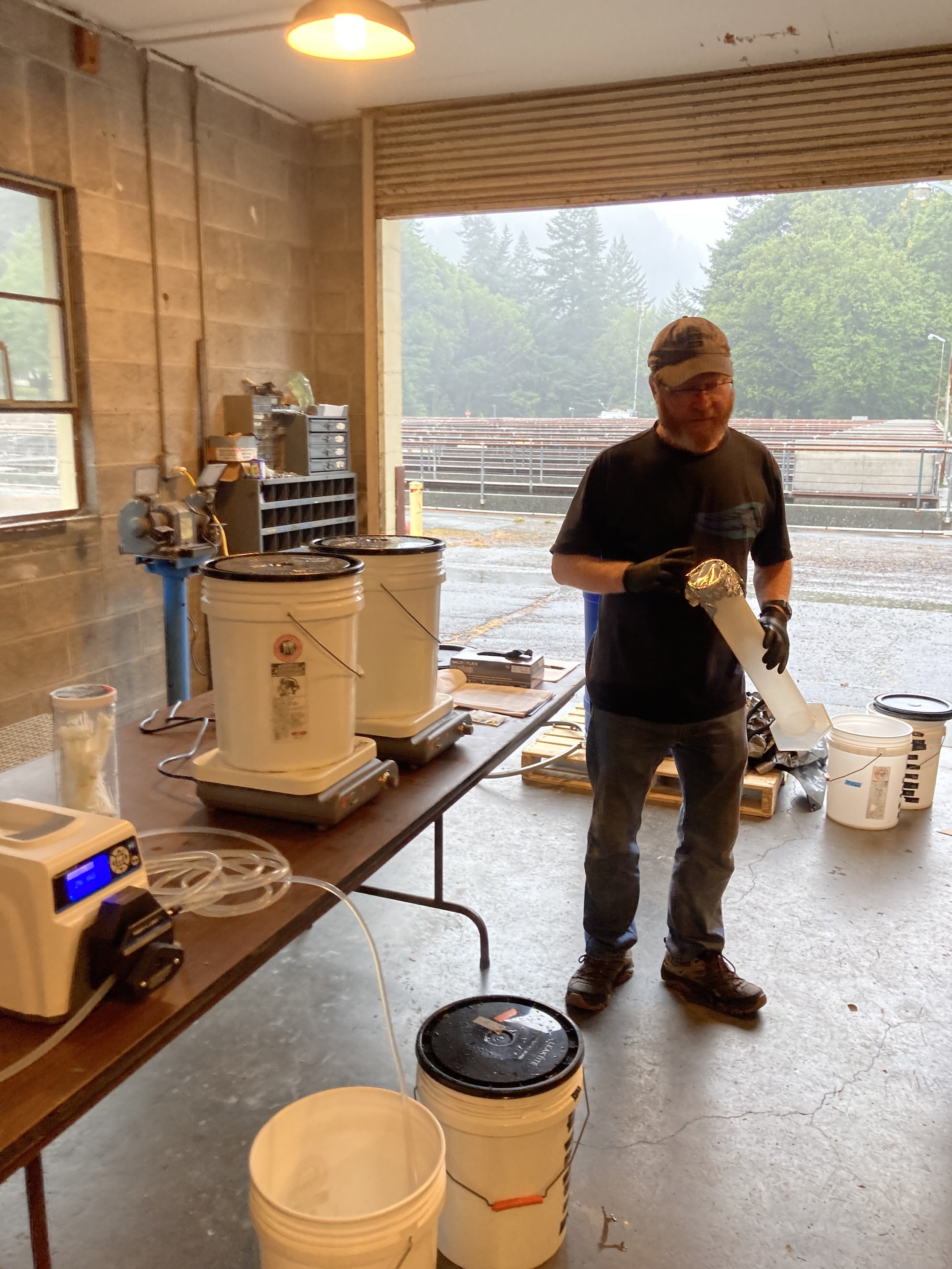
Andy preparing amino acids to drip into the fish ladder at the Elk River Hatchery

Amino acids dissolving into water before dripping

Fish ladder at Elk River Hatchery

Andy at the fish ladder at the Elk River Hatchery

Fish ladder at Elk River Hatchery
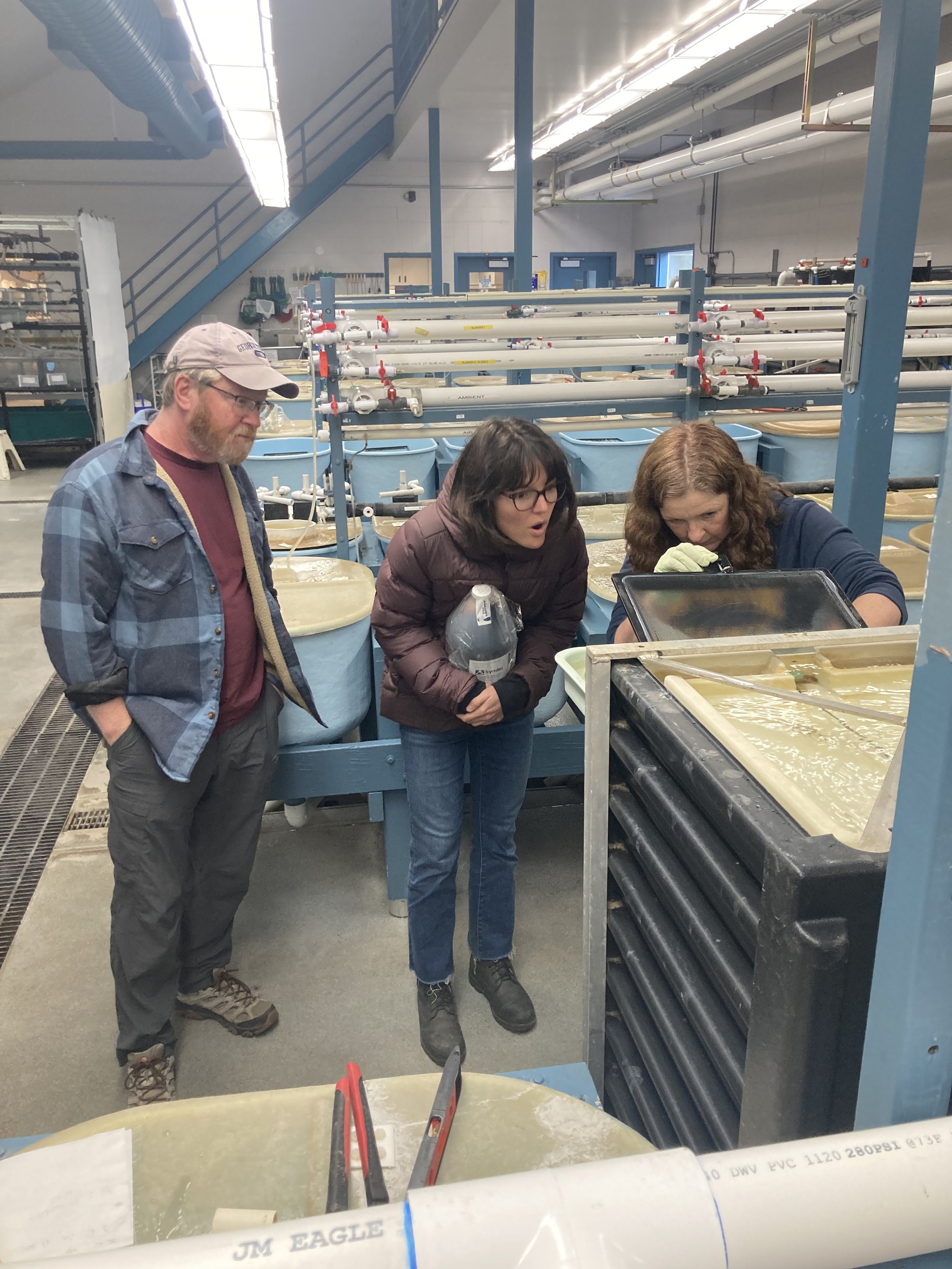
Wonderment as eggs from Elk River Hatchery fish develop at the Aquatic Animal Health Lab

Andy and Ashley weighing Elk River Hatchery eggs to allocate to heath trays

Andy Ruth (former AAHL facilities manager), and Ashley on egg day

Lab members learning how to pick eggs
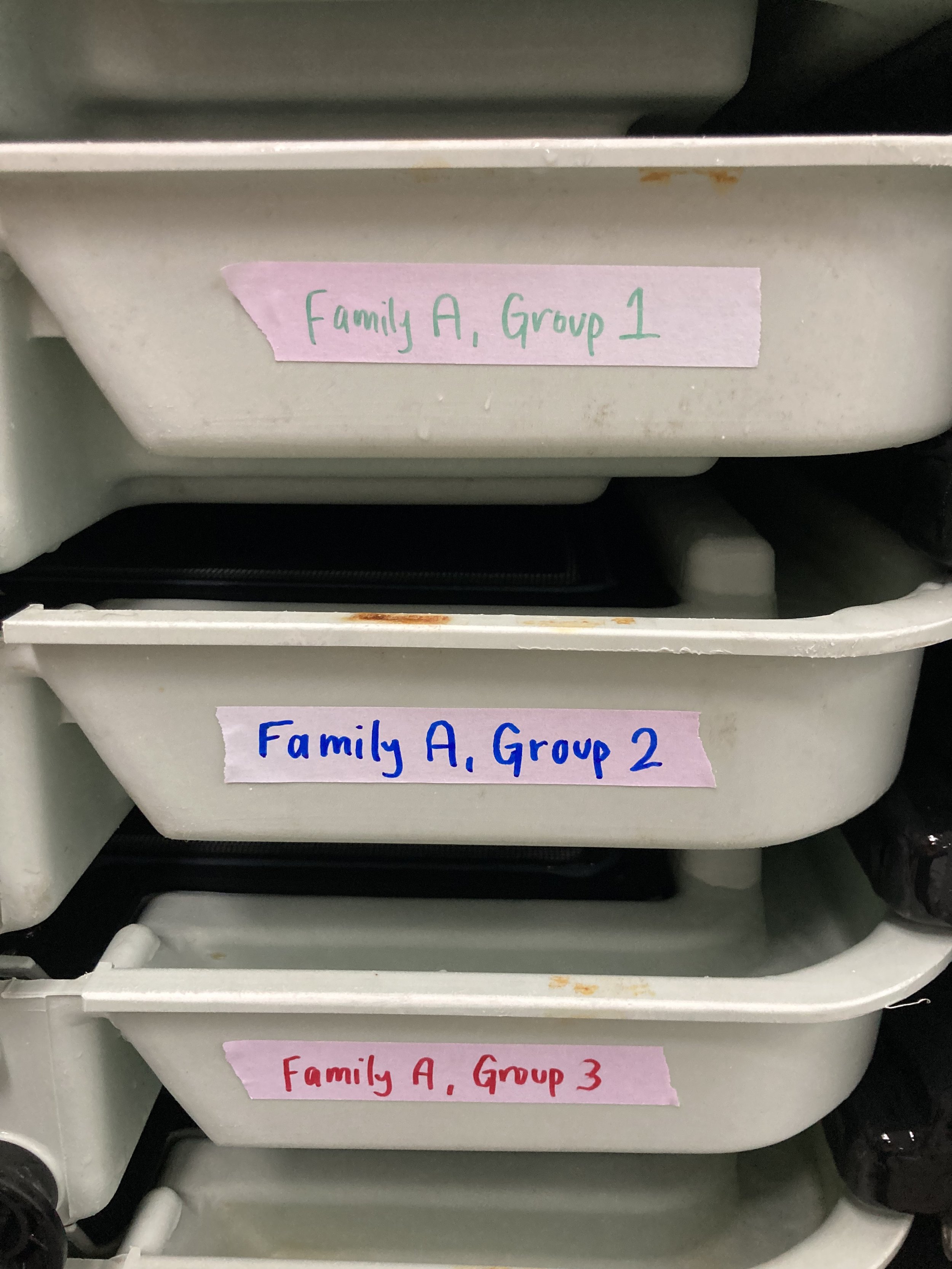
Heath trays full of eggs

Newly hatched Chinook salmon alevin

Fry almost buttoned up and ready to be ponded
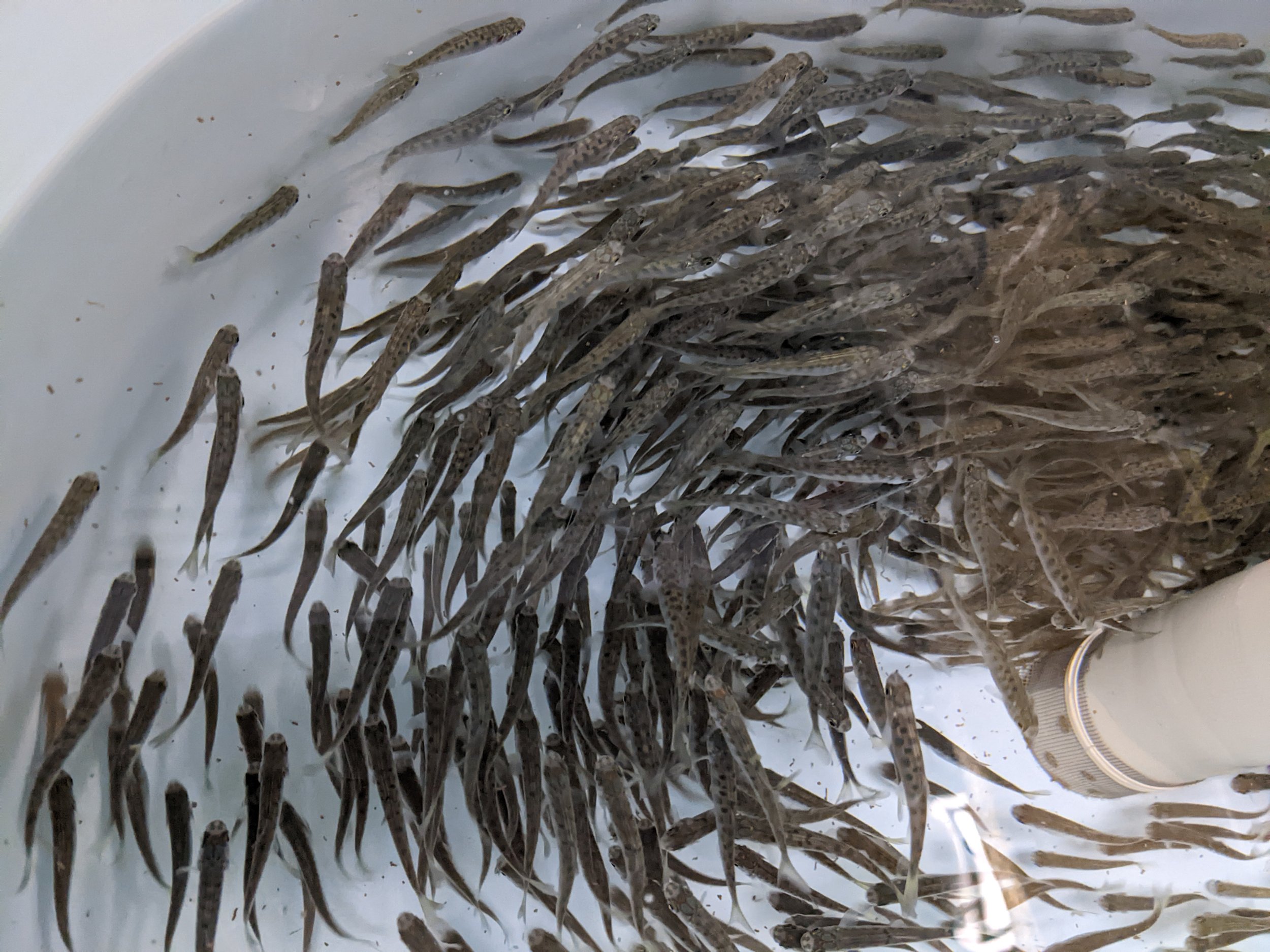
Experimental Chinook salmon fry at AAHL

Experimental Chinook salmon fry at AAHL

Seth checking on eggs

Outdoor tanks where fish were transported at the smolt stage

Kasey assembling the odor delivery for treatment tanks

Andy and Ashley on sample day using the famed Optivisor for a better look at olfactory rosettes

Mimi extracting an olfactory rosette on sample day
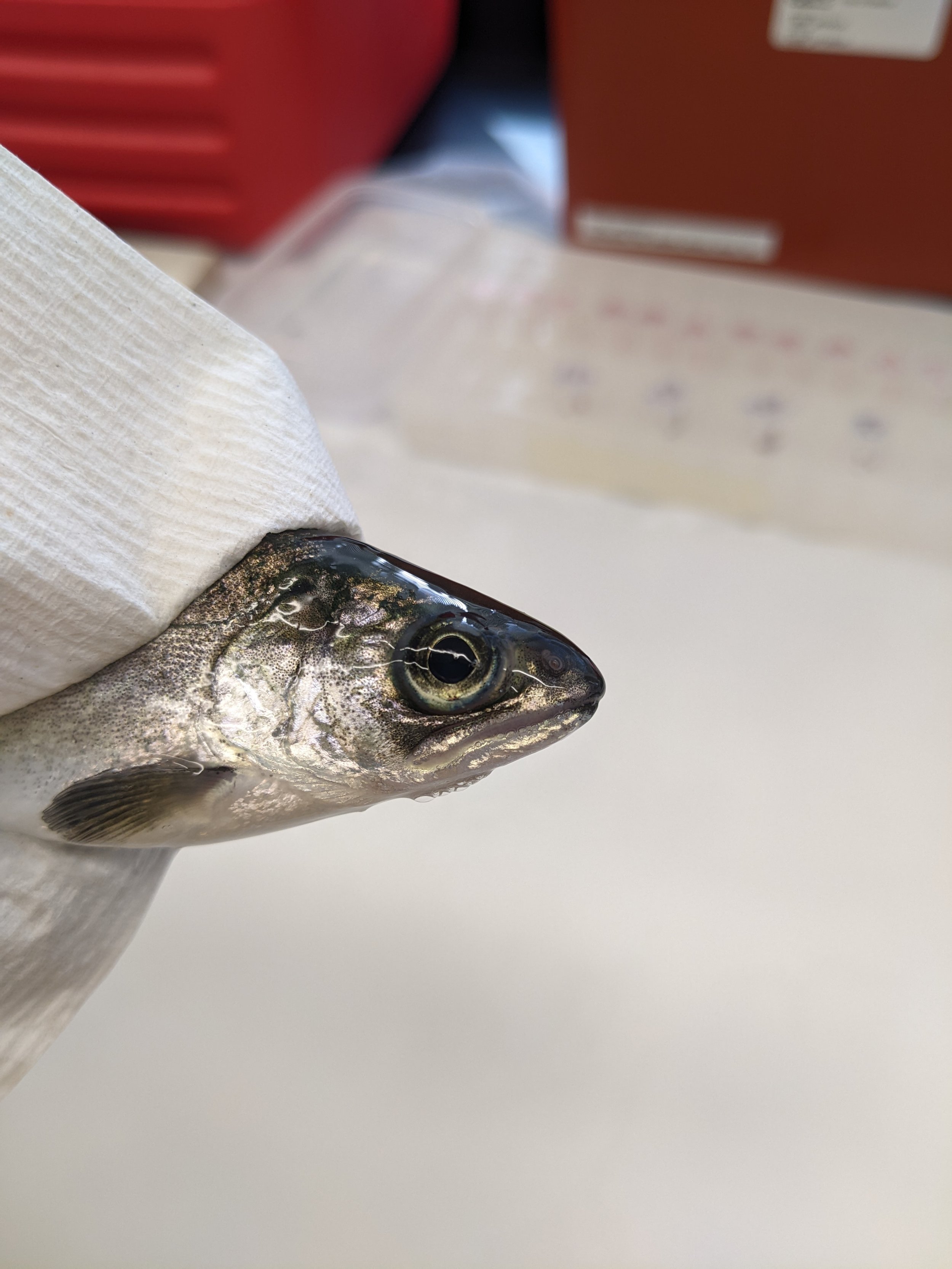
Chinook salmon fry just before sampling its olfactory rosette
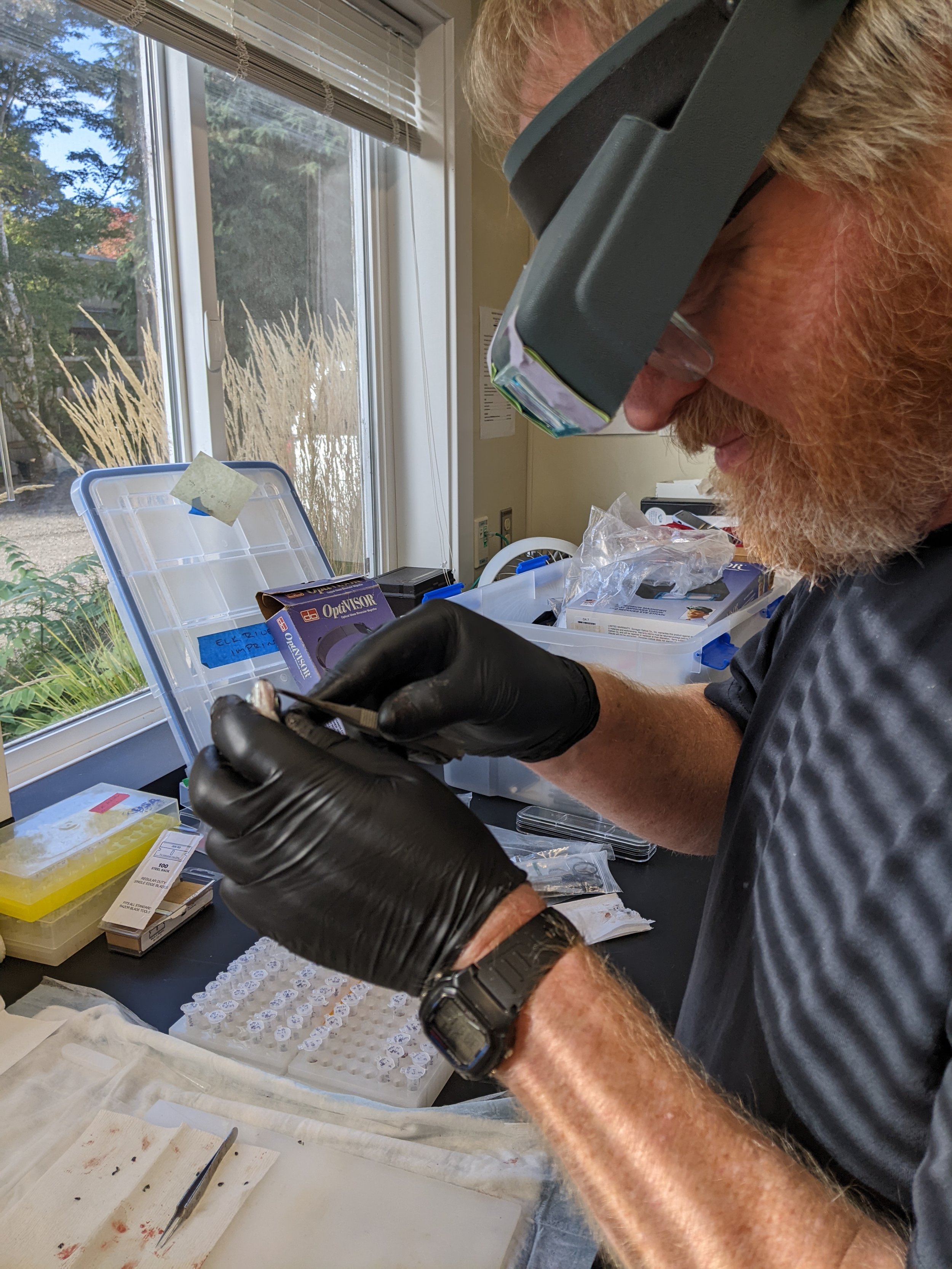
Andy extracting an olfactory rosette on sample day

Indoor fish tanks at AAHL